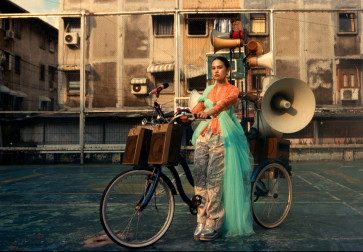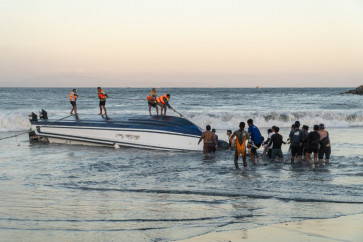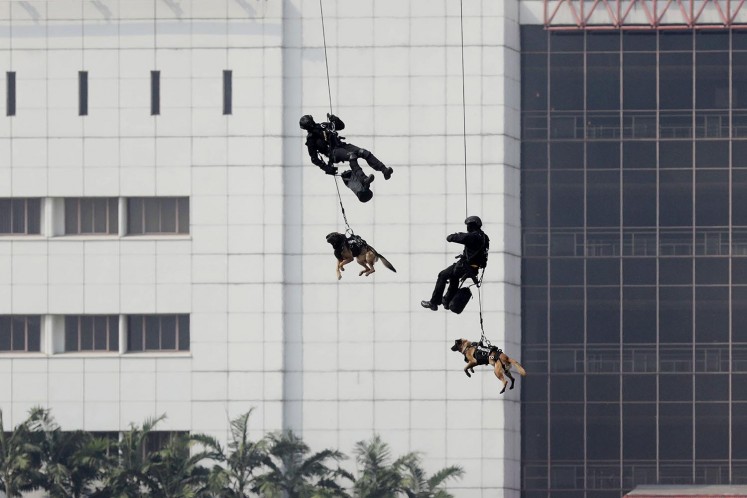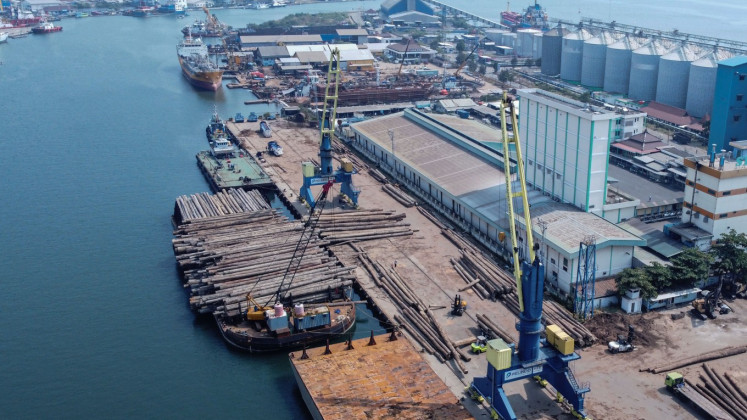Popular Reads
Top Results
Can't find what you're looking for?
View all search resultsPopular Reads
Top Results
Can't find what you're looking for?
View all search resultsGovt has yet to learn from Aceh tragedy
JP/Hotli SimanjuntakKuntoro Mangkusubroto is the former chief of the Reconstruction and Rehabilitation Agency for Aceh and Nias (BRR Aceh-Nias), set up in 2005 in the wake of the December 2004 earthquake and tsunami
Change text size
Gift Premium Articles
to Anyone
JP/Hotli Simanjuntak
Kuntoro Mangkusubroto is the former chief of the Reconstruction and Rehabilitation Agency for Aceh and Nias (BRR Aceh-Nias), set up in 2005 in the wake of the December 2004 earthquake and tsunami. The BRR earned global praise for its handling of the rebuilding and rehabilitation following an unprecedented disaster, which affected a province already scarred by decades of war. The following are excerpts of an interview with the former head of the Presidential Working Unit for Supervision and Management of Development (UKP4), who is a professor and board member at the Business and Management School (SBM) of the Bandung Institute of Technology.
Question: What are your lasting memories of your work in Aceh?
Answer: I left Aceh happy, knowing full well that all the targets had been realized, that we had built homes, schools, infrastructure and community health centers in numbers even greater than was initially requested. I left no business unfinished, and left Aceh in a better condition than it was before the disaster. Meanwhile, social, economic and other issues are fully in the hands of the Acehnese people and their leaders.
In hindsight, what would you have done differently?
If I had to do it again, and I hope such a disaster never occurs again, I would do things just the same ' with minor corrections. For example, I would like the authority to conduct reconstruction without the lengthy bidding procedure of 52 days, as is standard. This makes things very difficult in a post-disaster situation.
After the 2004 earthquake and tsunami, what national policies related to disasters were based on the experience of the BRR?
I don't think the government has learned [from the experience] especially in terms of the planning of reconstruction after disasters on such a massive scale. It's very troublesome.
For example, the auditing of the result of post-disaster reconstruction. While I rebuilt Aceh with my colleagues in four years, in the fifth year the audit result had not been issued by the Finance Ministry and the Supreme Audit Agency.
So the question arises, is it that the system [of auditing] cannot accommodate the nature of a post-disaster situation? Or is it that there is no understanding of the nature of reconstruction after a disaster on a scale as huge as in 2004?
I don't understand, because auditing is vital ['¦] it is quite natural that post-disaster situations attract thieves who seek opportunities in a time of crisis.
But reconstruction should be a time for quick rebuilding to help victims restore their lives. You need a different audit procedure than in normal times.
If I wasn't able to conduct rebuilding by following the procedure of 52 days then it should not be seen as an administrative error, but an effort to speed up reconstruction according to uncompromised quality compared with the planned [specifics].
There has been no understanding of this. Over the five years, the individual auditors who came [to the BRR] kept changing; none of them had experience in [auditing] post-disaster situations.
What are you most proud of in the work of the BRR?
I'm most proud of my excellent staff, who were also appreciated by local communities and the local and national government. The BRR became a training ground.
Sudirman Said, a former deputy, is now a minister [of energy and mineral resources]; Amin Subekti [the former fund director] went on to serve at the World Bank; Said Faisal [a former deputy] now leads the [AHA] Center [ASEAN Coordinating Center for Humanitarian Assistance on Disaster Management in Jakarta]. [William] Sabandar and Heru Prasetyo went on to serve REDD+ [Reducing Emissions from Deforestation and Forest Degradation Management Agency].
Given the level of disappointment in the BRR, as expressed by demonstrations, could you have implemented better supervision of the distribution of assistance?
We had two phases ['¦] in the first year, distribution was carried out through local authorities. This was a learning phase where we found the governance [capacity] was far from [the national level].
So we took over and did it ourselves. The initial distribution and building of homes under the local housing agency was of low quality with low supervision, and a low degree of accountability.
What lessons are there from the Aceh disaster for the national and regional context, in a region highly prone to disasters?
For such a huge scale you always need an ad hoc body because it has to be a specific body that cannot be combined with others. For disasters similar to the scale of the Mount Sinabung eruptions [in North Sumatra] the local disaster agency is enough.
Similar ad hoc bodies were set up following Fukushima [a March 2011 earthquake and tsunami in northern Japan leading to the leakage of nuclear power plants, killing some 19,000], Tacloban [the area worst affected by a typhoon in the Philippines in November 2013, which displaced some 4 million] and Nargis [May 2008 cyclone around Myanmar's Irawaddy Delta, killing almost 140,000].
Tacloban used the model of the BRR database [Recovery Aceh and Nias Database, RAND, awarded the Government Technology Award 2008 by FutureGov, the regional community of government, education and healthcare officials in Asia-Pacific].
For such a disaster we cannot rely on the BNPB [National Disaster Mitigation Agency], which is typical of bureaucracy; slow, too much paperwork, an unnecessary flow of information and a rigid hierarchy.
The AHA is not a competitor to the BNPB or the PMI [Indonesian Red Cross] for instance; the center needs support, especially regarding its network as it functions to coordinate aid.
We're done: Head of the Reconstruction and Rehabilitation Agency for Aceh and Nias (BRR Aceh-Nias) Kuntoro Mangkusubroto (center, in blue) helps take down an agency sign in Banda Aceh after its mission officially ended on April 16, 2009. JP/Hotli Simanjutak
In the initial blueprint after the disaster there were supposed to be no buildings within a certain distance of the coast, but buildings and homes have been built along the shore nonetheless ...
I didn't use the Bappenas [National Development Planning Board] blueprint ['¦] there was absolutely no trust [among survivors] in the government.
They feared that if they moved, their plots would be turned into hotels. The people have sentimental ties to the land, we were unable to convince them to leave and move. One man pointed to the water telling me, 'that's my land under the water'. I finally coaxed him and promised, 'I will not take your land, I will give you another plot up the hill', and told him he could move back if he wanted to, when the water receded.
So [in this way] we managed to open new places [for the relocation of survivors]. A new town was Beuramoe [built with several donors in Aceh Besar regency]. I opened it myself ' I'm very proud of it.
Aceh was a rare case of a huge disaster following decades of armed conflict. What are comparable situations?
In Sri Lanka they still have not completed the reconstruction. As their approach was to wipe out altogether the rebels, the conflict shifted to one between the main ethnic groups.
' JP/Ati Nurbaiti











